12 Sustainable Clothing Brands to Watch in 2025
The fashion world is experiencing a major shift as more shoppers demand transparency, ethics, and responsibility from their favorite labels. Did you know the global sustainable fashion market is projected to surpass $10 billion in 2025?
This article highlights 12 sustainable clothing brands that are leading this eco-conscious transformation. Discover how these innovators blend style, sustainability, and ethics to create standout collections and transparent pricing.
Imagine building a wardrobe that is chic yet planet-friendly. Ready to find your next favorite sustainable clothing label for 2025? Read on to explore the brands reshaping fashion for a greener future.
Why Sustainable Clothing Matters in 2025
As fashion consumers become more aware of their impact, the call for sustainable clothing brands grows louder each year. In 2025, the industry stands at a crossroads, balancing style with responsibility. Understanding why sustainable clothing brands matter is key to making informed choices for the planet and future generations.
The Environmental Impact of Fast Fashion
Fast fashion has long dominated the global market, but its environmental toll is staggering. The sector is responsible for about 10% of worldwide carbon emissions, rivaling the airline and shipping industries combined. Traditional textile manufacturing requires vast amounts of water and often leads to chemical pollution in rivers and oceans.
Each year, the world discards approximately 92 million tons of textile waste, filling landfills with non-biodegradable materials. Microplastics from synthetic fibers further harm marine life, disrupting delicate ecosystems. Documentaries such as “The True Cost” have heightened consumer awareness, sparking interest in the environmental impact of fast fashion and the urgent need for sustainable clothing brands.
Shifting Consumer Values & Market Growth
The rise of conscious consumerism has transformed the fashion landscape. Today, over 60% of Gen Z and Millennials say sustainability is a top priority when choosing apparel. This shift has prompted brands to rethink their practices, focusing on transparency, ethical labor, and eco-friendly materials.
Sustainable clothing brands are meeting this demand by adopting fair labor policies and supporting local communities. The secondhand and slow fashion markets have also gained momentum, reflecting a broader movement toward mindful consumption. With a projected CAGR of nearly 10% through 2025, sustainable clothing brands are not just a trend but a growing force in the industry.
Key Features of Sustainable Fashion Brands
Sustainable clothing brands distinguish themselves through a commitment to responsible practices at every stage. Many use organic, recycled, or biodegradable fabrics to minimize environmental harm. Ethical manufacturing ensures workers receive fair wages and safe conditions, while some brands invest directly in the communities they serve.
Certifications like GOTS, Fairtrade, OEKO-TEX, and B Corp offer consumers trust and transparency. Circular business models, such as repair, resale, and take-back programs, further reduce waste. Inclusivity and timeless design are also at the heart of many sustainable clothing brands, making them appealing to a broad audience.
Challenges and Opportunities Ahead
While sustainable clothing brands are gaining ground, they face ongoing challenges. Affordability remains a barrier for some consumers, as eco-friendly products often carry higher upfront costs. Navigating claims of greenwashing and understanding certification standards can also be complex.
However, innovation offers hope. Regenerative agriculture, AI-driven production, and zero-waste design are reshaping the industry. Brands like Patagonia lead by example, supporting environmental causes and championing transparency. As consumer education grows, sustainable clothing brands are poised to drive meaningful change in the years ahead.
12 Sustainable Clothing Brands to Watch in 2025
The world of sustainable clothing brands is evolving rapidly, with new leaders emerging each year. As the industry experiences remarkable growth, conscious shoppers now have more choices than ever. In fact, the sustainable fashion market is expected to surpass $10 billion by 2025, reflecting a major shift in consumer values and industry innovation. For an in-depth look at the data and projections shaping this movement, see these Sustainable fashion market growth projections.
Let us explore 12 sustainable clothing brands setting the standard for eco-friendly style in 2025. Each brand is redefining what it means to dress with purpose, blending ethics, transparency, and trendsetting designs.
Patagonia
Patagonia stands as a pioneer among sustainable clothing brands. Known for its commitment to environmental activism, the company uses recycled materials throughout 98% of its collection.
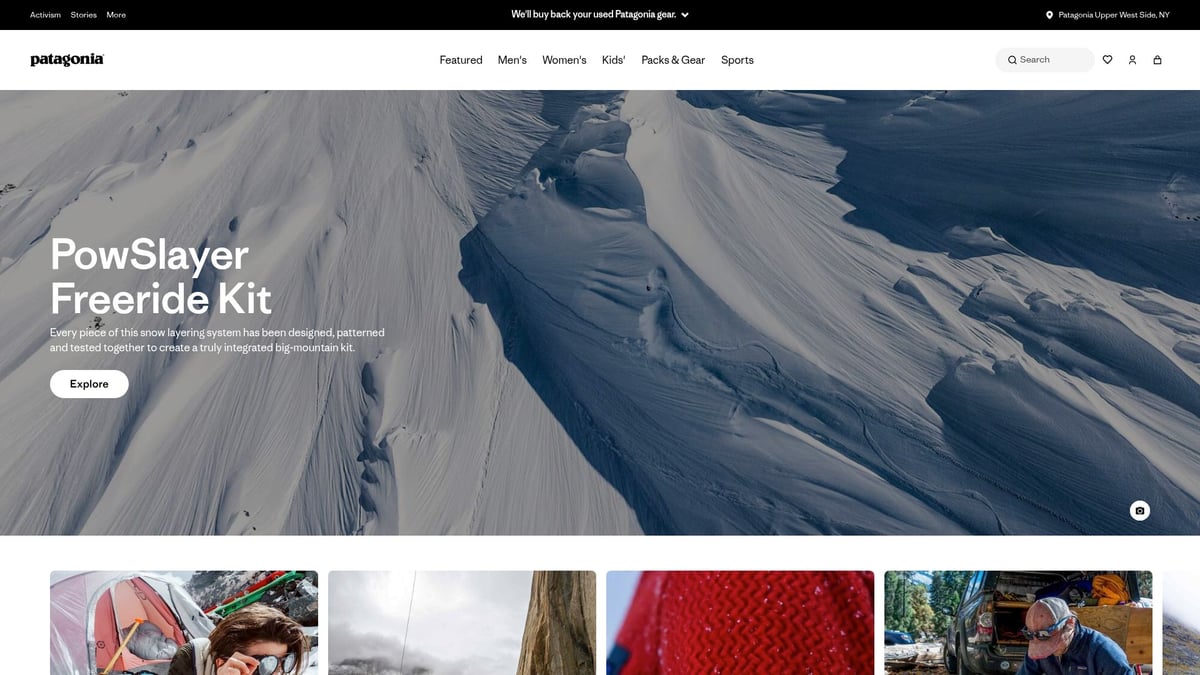
- Pricing: Outerwear from $79, basics from $35, premium jackets $200+
-
Core Features:
- Recycled fabrics
- Fair Trade Certified manufacturing
- Worn Wear repair and reuse program
- Key Benefits: Durable, functional apparel designed for outdoor enthusiasts and eco-conscious families.
Pros:
- Transparent supply chain
- Lifetime repair guarantee
- Strong environmental advocacy
Cons:
- Higher price point
- Limited trend-driven styles
Patagonia donates 1% of sales to environmental causes, reinforcing its position as a leader in sustainable clothing brands.
Reformation
Reformation has become a go-to name among sustainable clothing brands for fashion-forward women who want both style and substance.
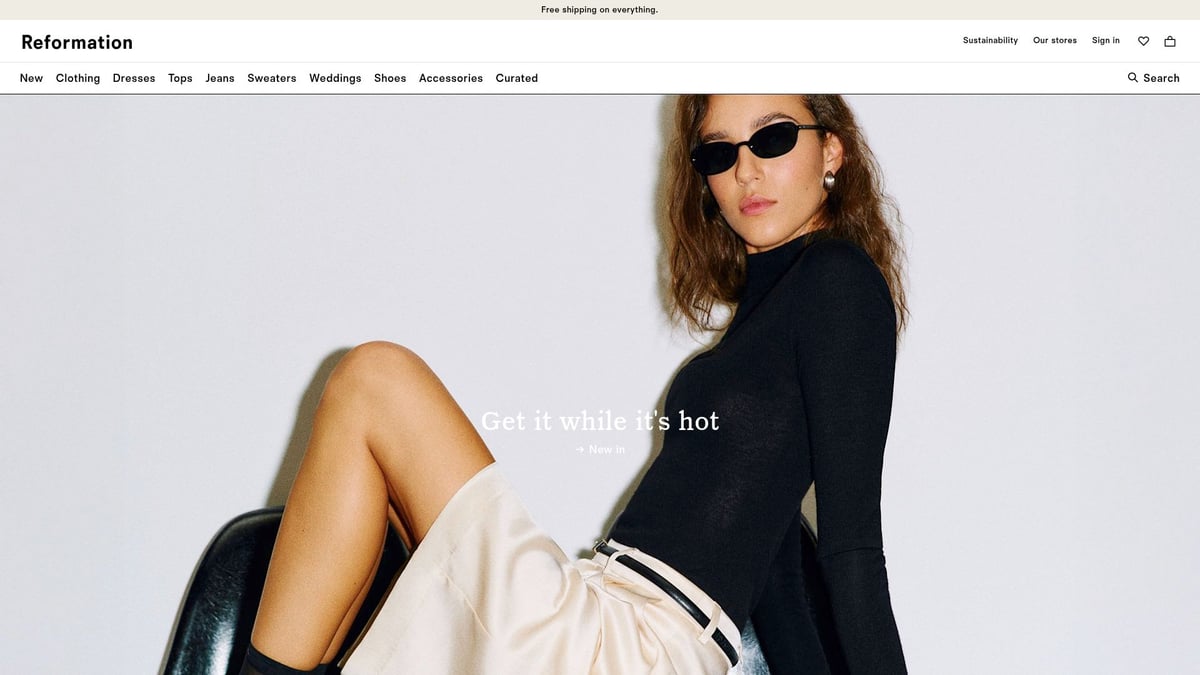
- Pricing: Dresses $98–$300, denim $100+, outerwear $200+
-
Core Features:
- Low-impact materials
- Transparent sustainability reporting
- Carbon-neutral shipping
- Key Benefits: Chic, feminine designs that remain eco-friendly.
Pros:
- Inclusive sizing
- Detailed sustainability scorecards
- Transparent supply chain
Cons:
- Premium prices
- Occasional fit inconsistencies
Every Reformation item is climate neutral, making it a standout in the sustainable clothing brands landscape.
Pact
Pact focuses on affordable, comfortable basics for the entire family, making it a favorite among sustainable clothing brands for everyday wear.
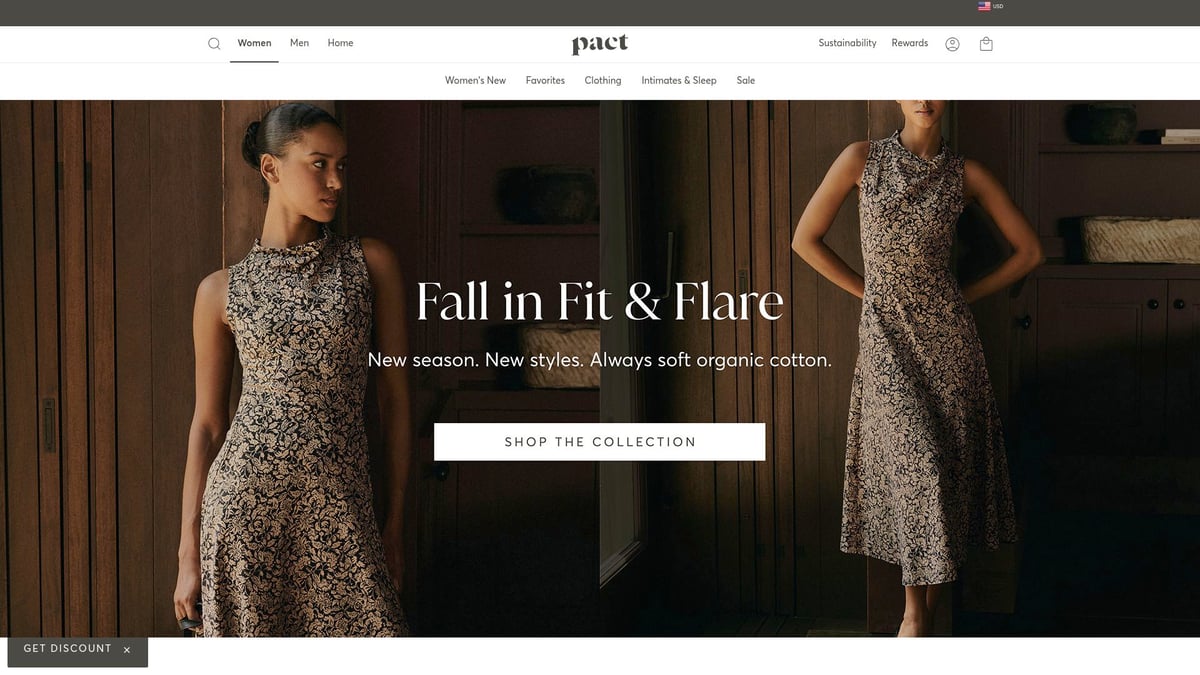
- Pricing: Tees from $20, leggings $30, dresses $40–$80
-
Core Features:
- GOTS-certified organic cotton
- Fair Trade Certified factories
- Carbon-offset shipping
- Key Benefits: Soft, size-inclusive essentials with biodegradable packaging.
Pros:
- Accessible pricing
- Wide size range (XS–2XL)
- Donation program for used clothing
Cons:
- Mostly basics, fewer fashion-forward options
Pact’s dedication to sustainable materials and practical style cements its reputation among top sustainable clothing brands.
Stella McCartney
Stella McCartney leads luxury sustainable clothing brands with bold innovation and unwavering ethics.
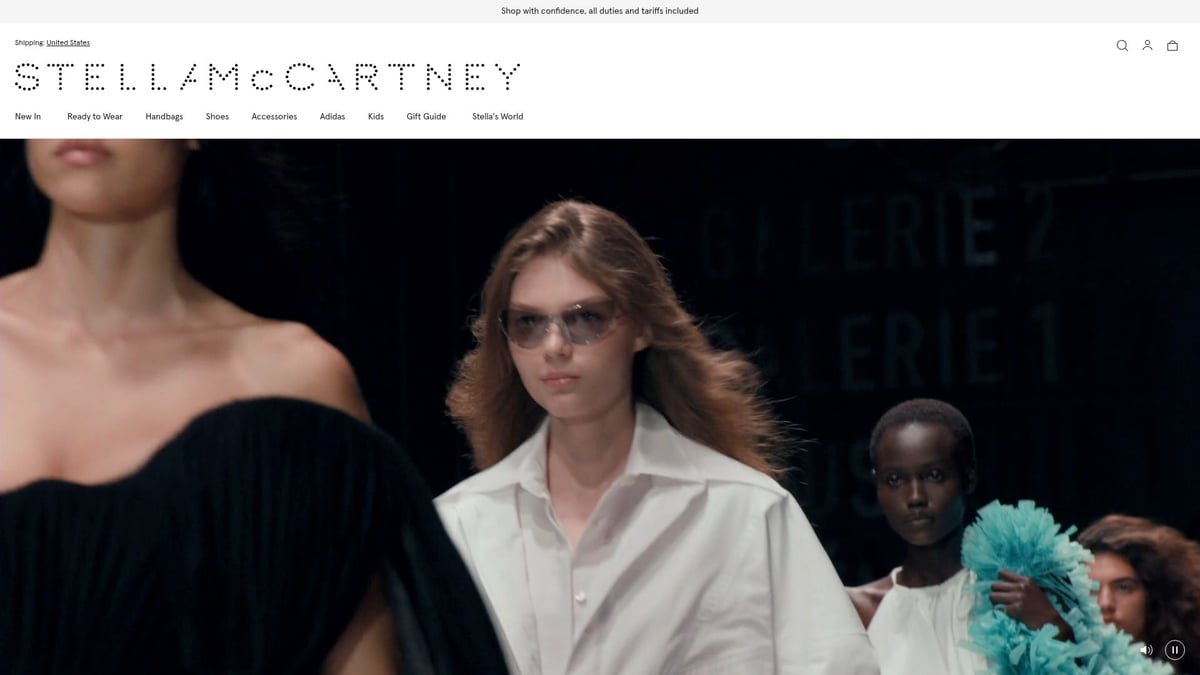
- Pricing: Luxury dresses $600+, outerwear $1,000+, accessories $300+
-
Core Features:
- Vegetarian and cruelty-free
- Recycled and innovative materials
- Key Benefits: High-fashion looks with a strong sustainability ethos.
Pros:
- Pioneering vegan leather
- Celebrity collaborations
- Runway influence
Cons:
- High price point
- Less accessible for budget shoppers
Stella McCartney debuted the first mushroom leather bag, showing why it is at the forefront of sustainable clothing brands.
Quince
Quince offers affordable luxury basics, making high-quality pieces accessible within sustainable clothing brands.
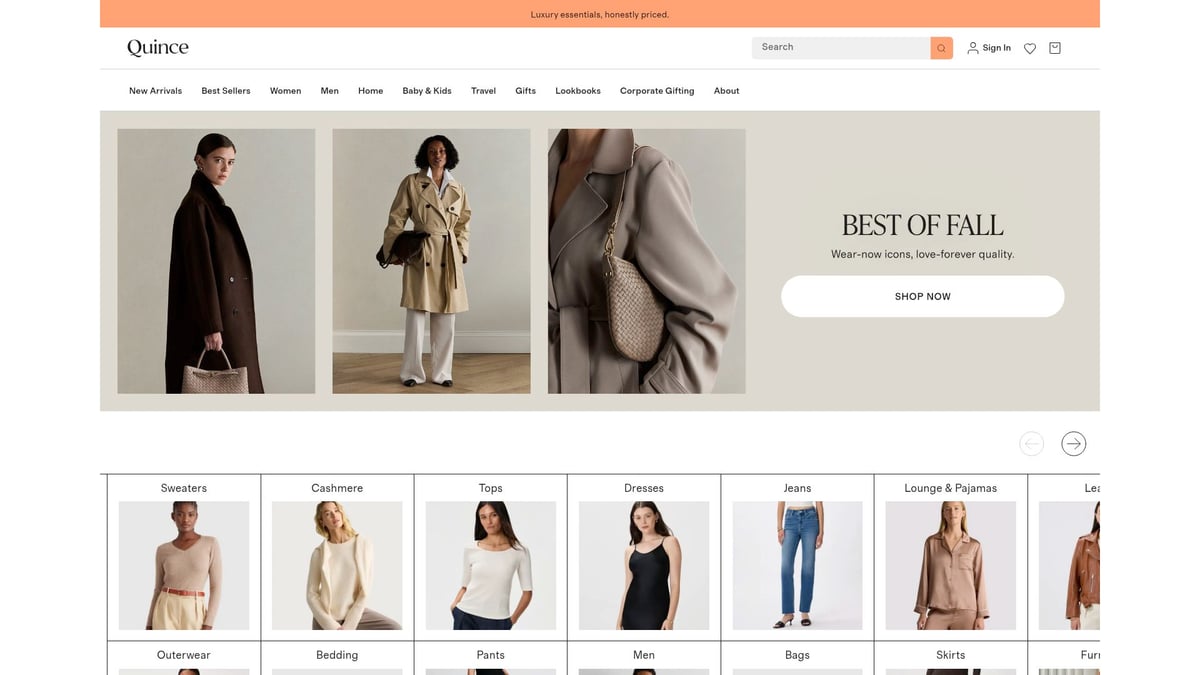
- Pricing: Silk tops $59, cashmere sweaters $50–$100, linen $30+
-
Core Features:
- OEKO-TEX certified materials
- Direct-to-consumer model
- Plastic-free packaging
- Key Benefits: Transparent pricing and low markups.
Pros:
- Versatile, minimalist styles
- Wide size range (XS–3X)
- High value for price
Cons:
- Limited statement pieces
- Occasional stock shortages
Quince brings luxury fabrics into the sustainable clothing brands market at a fraction of traditional costs.
Girlfriend Collective
Girlfriend Collective sets new standards for inclusivity and transparency among sustainable clothing brands.
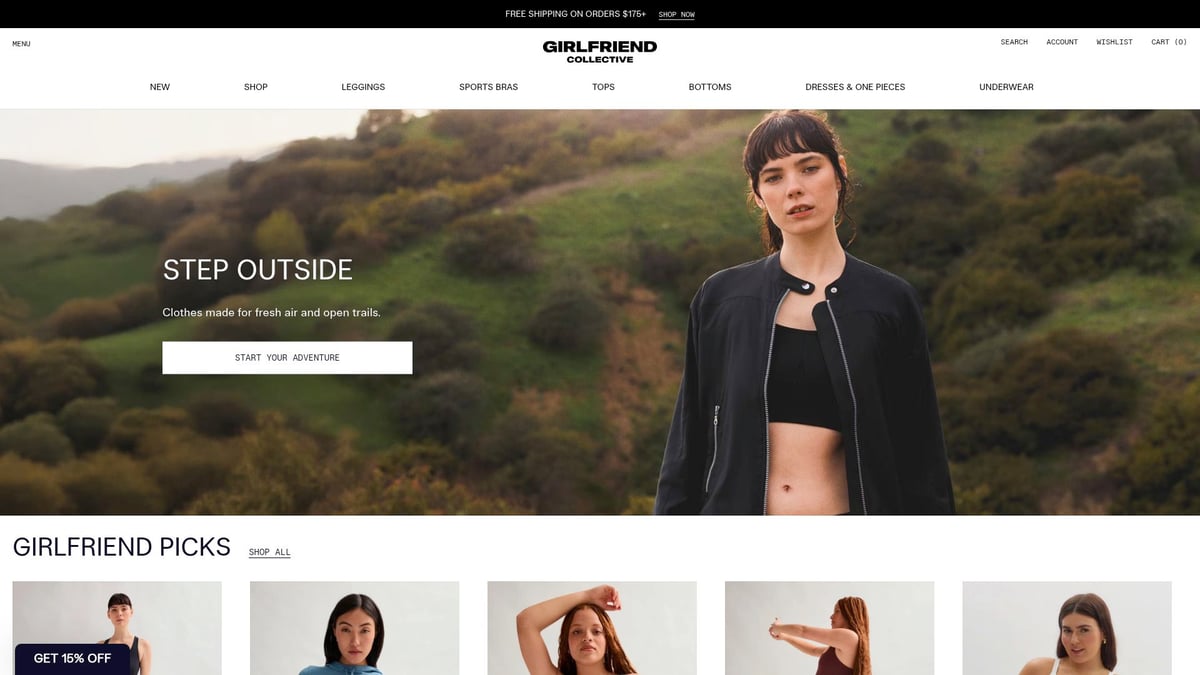
- Pricing: Leggings $78, bras $38, outerwear $98+
-
Core Features:
- Recycled water bottles in fabrics
- Inclusive sizing (XXS–6XL)
- Ethical factories
- Key Benefits: Performance activewear for every body.
Pros:
- Vibrant color palette
- Transparency reports
- Extended sizing
Cons:
- Some items sell out quickly
- Mid-range pricing
Girlfriend Collective has diverted over 8 million plastic bottles from landfills, a testament to its impact as one of the most innovative sustainable clothing brands.
Eileen Fisher
Eileen Fisher stands for timeless design and circularity, making it a classic among sustainable clothing brands.

- Pricing: Tees $68+, pants $120+, outerwear $300+
-
Core Features:
- Organic and regenerative fibers
- Take-back recycling program
- B Corp certification
- Key Benefits: Minimalist, professional attire built for longevity.
Pros:
- Inclusive sizing
- Strong social responsibility
- Circular design programs
Cons:
- Higher price range
- Understated styles
The Renew program remakes old garments into new, reinforcing Eileen Fisher’s leadership in sustainable clothing brands.
Veja
Veja has redefined ethical sneakers within sustainable clothing brands, merging street style with eco-conscious sourcing.
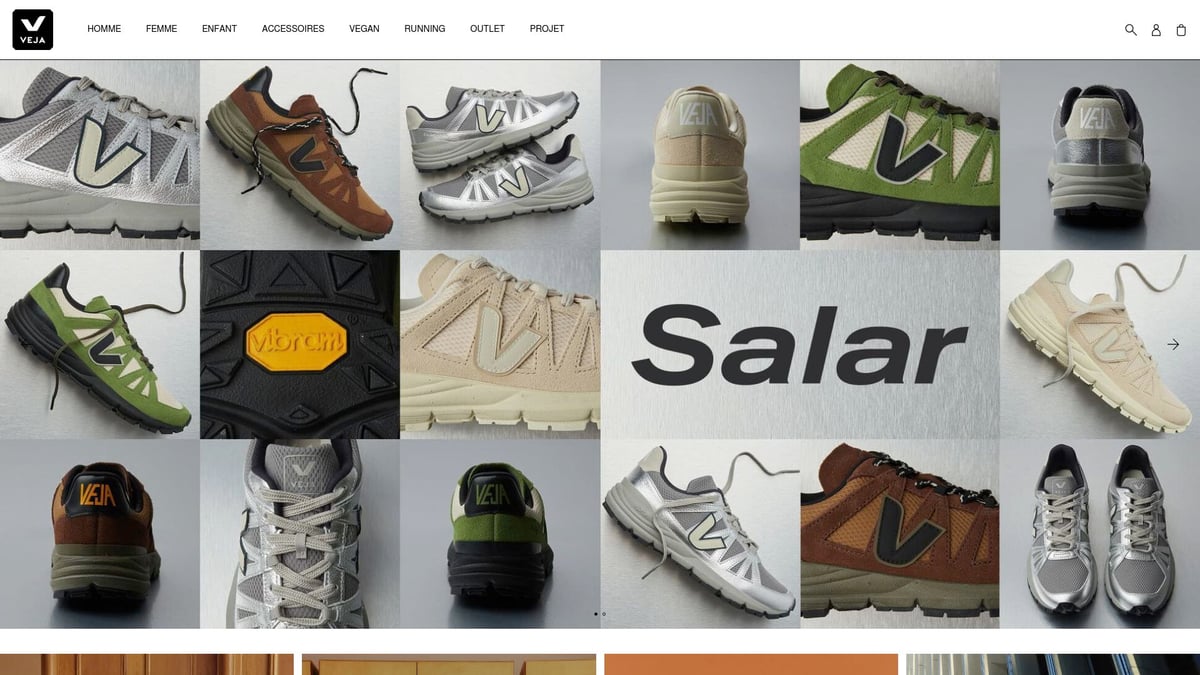
- Pricing: Sneakers $120–$200
-
Core Features:
- Fairtrade organic cotton
- Wild rubber from the Amazon
- Transparent sourcing
- Key Benefits: Iconic, durable sneakers with vegan options.
Pros:
- Stylish and functional
- Vegan-friendly collections
- Celebrity endorsements
Cons:
- Limited arch support
- Premium price for sneakers
Veja sells over 700,000 pairs annually, making it a household name among sustainable clothing brands.
Outerknown
Outerknown brings surf culture and sustainability together, standing out among sustainable clothing brands for casualwear.
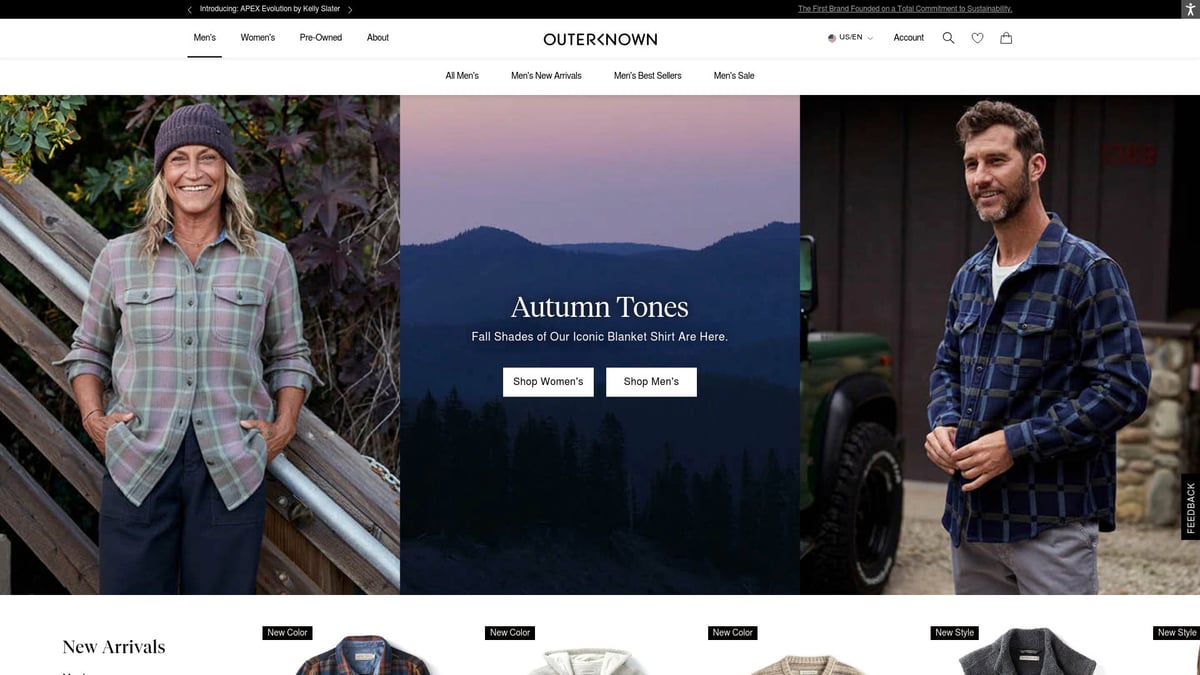
- Pricing: Tees $48, jeans $98+, jackets $150+
-
Core Features:
- Recycled and organic materials
- Fair Labor Association member
- Circular “Project Rescue” resale platform
- Key Benefits: Durable, gender-neutral styles for outdoor lovers.
Pros:
- Transparent supply chain
- Resale and repair options
- Strong ethical values
Cons:
- Smaller women’s selection
- Mid-high price point
Co-founded by pro surfer Kelly Slater, Outerknown incorporates 90% organic or recycled fibers, strengthening its place in sustainable clothing brands.
Amour Vert
Amour Vert infuses Parisian chic into sustainable clothing brands, focusing on eco-friendly everyday staples.
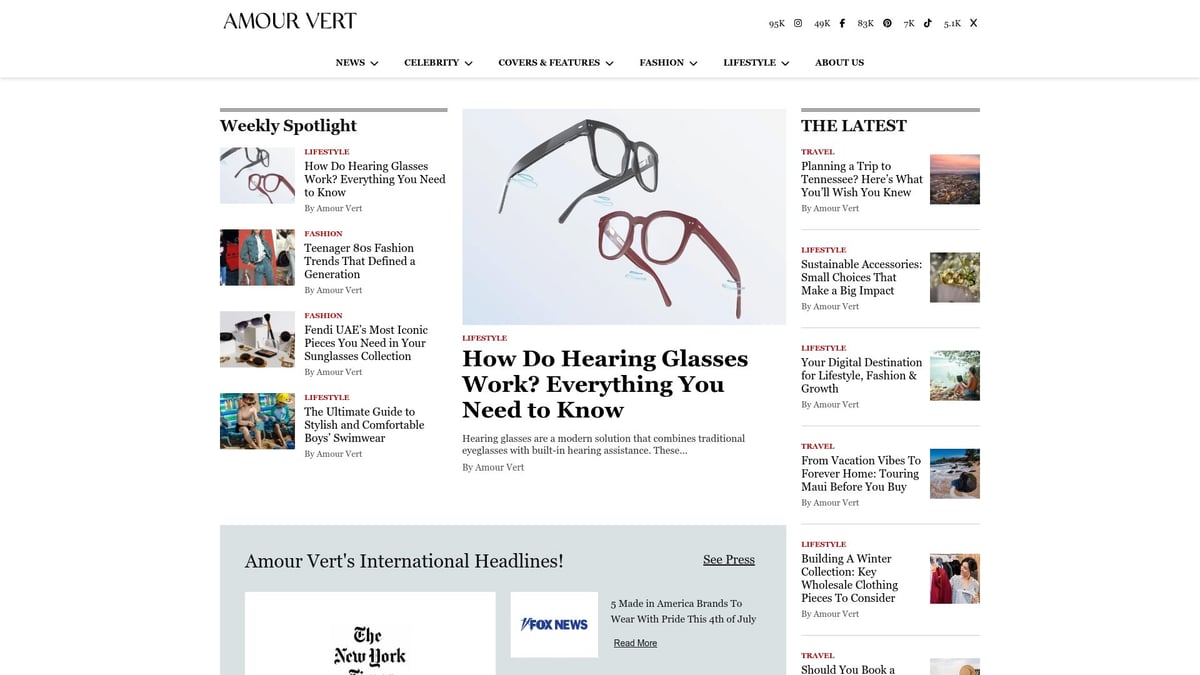
- Pricing: Tees $38+, dresses $100+, outerwear $150+
-
Core Features:
- TENCEL™, organic cotton
- Zero-waste production
- “Buy a Tee, Plant a Tree” initiative
- Key Benefits: Elegant, effortless pieces with a purpose.
Pros:
- Small-batch production
- Limited edition prints
- Tree-planting program
Cons:
- Limited men’s selection
- Higher price for some items
Amour Vert has planted over 350,000 trees, highlighting its commitment among sustainable clothing brands.
Nudie Jeans
Nudie Jeans offers rugged denim with a sustainable twist, earning its spot among leading sustainable clothing brands.
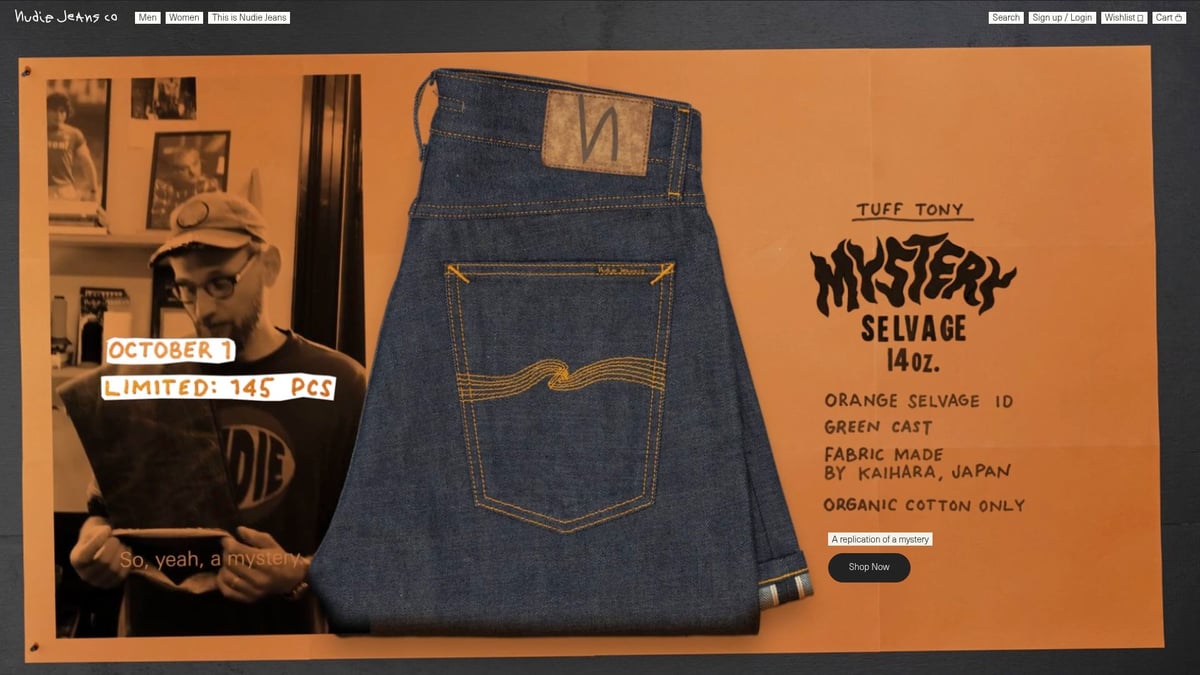
- Pricing: Jeans $130+, jackets $200+, tees $50+
-
Core Features:
- 100% organic cotton denim
- Free repairs for life
- Transparent production
- Key Benefits: Classic, durable denim with environmental focus.
Pros:
- Free worldwide repairs
- Recycled denim program
- Fair labor standards
Cons:
- European sizing
- Fewer trendy fits
Nudie Jeans repaired over 63,000 denim pieces last year, setting a new standard for sustainable clothing brands’ longevity.
Mara Hoffman
Mara Hoffman is celebrated among sustainable clothing brands for combining artistic expression with responsible production.
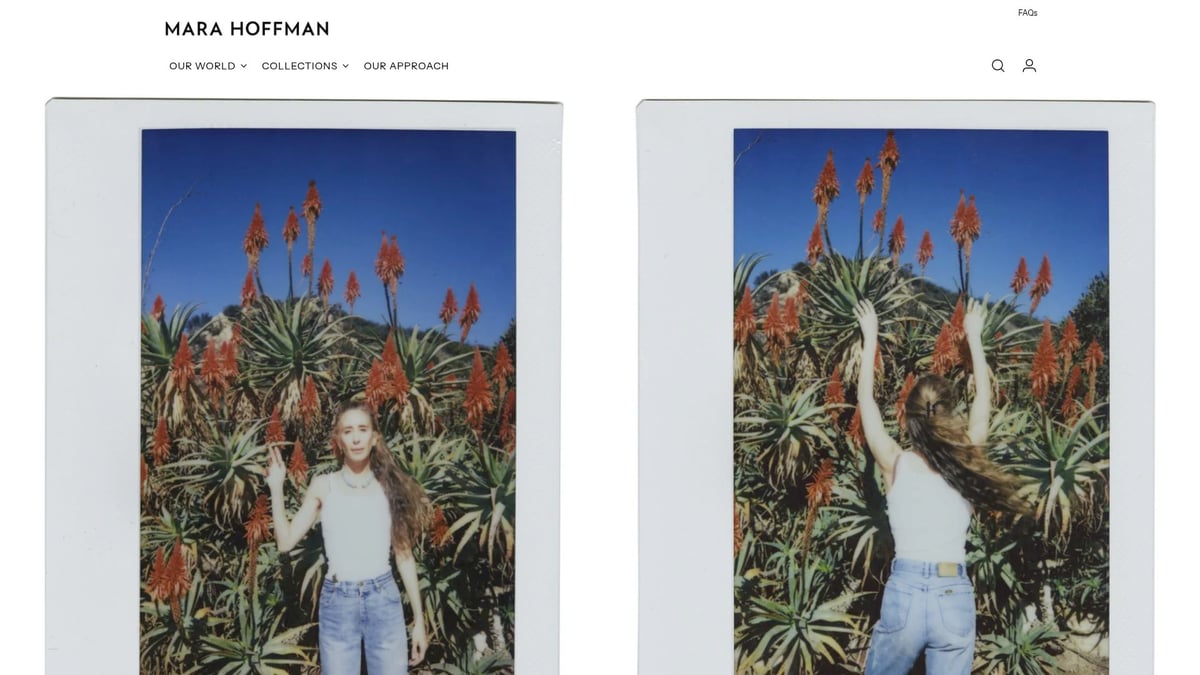
- Pricing: Dresses $250+, swimwear $150+, knitwear $200+
-
Core Features:
- Hemp, TENCEL™, recycled polyester
- Size inclusivity
- Transparent supply chain
- Key Benefits: Bold, statement-making pieces crafted with care.
Pros:
- Unique prints and designs
- Artisan collaborations
- Extended sizing
Cons:
- Premium pricing
- Limited menswear options
All Mara Hoffman swimwear is crafted from recycled fibers, reinforcing her brand’s leadership in sustainable clothing brands.
Sustainable Clothing Brands at a Glance
| Brand | Price Range | Standout Feature | Sizing |
|---|---|---|---|
| Patagonia | $35–$200+ | Repair program, activism | XS–XXL |
| Reformation | $98–$300+ | Trendy, climate neutral | 0–24 |
| Pact | $20–$80 | Organic basics, affordable | XS–2XL |
| Stella McCartney | $300–$1,000+ | Vegan luxury, innovation | XXS–XXL |
| Quince | $30–$100+ | Affordable luxury, direct-to-consumer | XS–3X |
| Girlfriend Collective | $38–$98+ | Recycled activewear, inclusivity | XXS–6XL |
| Eileen Fisher | $68–$300+ | Circular design, minimalism | PP–3X |
| Veja | $120–$200 | Ethical sneakers, vegan | 35–46 EU |
| Outerknown | $48–$150+ | Surf-inspired, resale program | XS–XXL |
| Amour Vert | $38–$150+ | Parisian, tree-planting | XS–XL |
| Nudie Jeans | $50–$200+ | Free repairs, organic denim | 24–38 |
| Mara Hoffman | $150–$250+ | Artistic, recycled fibers | XS–3X |
These sustainable clothing brands are shaping the future of ethical fashion, each with a unique approach. Whether you value affordability, luxury, inclusivity, or innovation, you can find a brand that aligns with your values and helps you build a wardrobe that is as stylish as it is responsible.
How to Choose the Right Sustainable Brand for You
Finding the right sustainable clothing brands can feel overwhelming with so many options in 2025. The key is to match your personal values, budget, and style needs with what these brands offer. By breaking down your priorities and understanding what to look for, you can confidently build a wardrobe that reflects both your ethics and your taste.
Assessing Your Values and Priorities
Start by considering which aspects of sustainability matter most to you. Do you want brands using organic or recycled materials, or do you prioritize ethical labor and fair wages? Some shoppers focus on local production, while others look for circular business models like take-back or repair programs.
Look for certifications such as GOTS, Fairtrade, or B Corp as reliable trust signals. These demonstrate a brand’s commitment to verified standards. For example, if vegan materials are important, sustainable clothing brands like Stella McCartney or Veja are strong choices.
By identifying your top priorities, you will narrow down your options and make more meaningful purchases.
Balancing Budget and Longevity
Sustainable clothing brands often come with higher upfront costs, but the long-term value can outweigh the initial investment. Consider the cost-per-wear: a well-made piece that lasts years is often more affordable over time than fast fashion items that quickly wear out.
Recent data shows that sustainable garments last two to three times longer on average. Moreover, consumer behavior in sustainable fashion indicates that many shoppers are willing to pay more for quality and ethics, especially as awareness grows.
By focusing on durability and classic design, you maximize both your budget and wardrobe sustainability.
Sizing, Inclusivity, and Fit
When choosing sustainable clothing brands, inclusivity is key. Look for brands offering a wide range of sizes and adaptive fits. For example, Girlfriend Collective spans sizes XXS to 6XL, and Eileen Fisher provides petite and plus options.
Transparency in size charts and flexible return policies are crucial for a positive experience. Before buying, review the Return Policy for Eco Apparel to ensure you can exchange or return items if the fit is not right.
A good fit supports comfort and confidence, making sustainable choices even more rewarding.
Shopping Tips and Red Flags
To shop smarter, watch for greenwashing—vague claims about sustainability without clear data or certifications. Reputable sustainable clothing brands publish transparency reports and impact statements.
Support brands with take-back, repair, or resale programs, as these are hallmarks of true circularity. Platforms like Outerknown’s Project Rescue or Eileen Fisher’s Renew set strong examples.
You can also explore resale or rental platforms for high-end pieces, making sustainable fashion accessible and affordable. With careful research, you will avoid pitfalls and support brands making real change.
The Future of Sustainable Fashion: Trends & Innovations
As we look ahead to 2025, the landscape for sustainable clothing brands is rapidly evolving. Innovations in materials, technology, and inclusivity are shaping a greener, more conscious industry.
Material Innovations and Circularity
Material breakthroughs are at the heart of the next wave of sustainable clothing brands. Regenerative agriculture is supplying organic cotton and hemp, while lab-grown fibers and biodegradable textiles are reducing environmental impact. Brands like Stella McCartney are pioneering vegan options such as mushroom-based leather, which offers a cruelty-free, compostable alternative to animal products.
Circular business models are also gaining traction. Take-back programs, upcycling, and rental services are making it easier than ever to keep clothing in use and out of landfills. According to circular fashion and recycling statistics, the adoption of circularity is accelerating, with more brands investing in closed-loop production and recycling. This focus on circularity ensures that sustainable clothing brands minimize waste at every stage.
Technology and Transparency
Technology is driving transparency and efficiency for sustainable clothing brands. Blockchain platforms are now tracking supply chains from farm to hanger, giving consumers confidence in the origins and ethics of their garments. AI-powered inventory management helps brands reduce overproduction and waste, aligning production with real demand.
Virtual try-ons and digital lookbooks are becoming standard, allowing shoppers to visualize styles without the carbon cost of shipping returns. These digital tools not only enhance the shopping experience but also support the mission of sustainable clothing brands by reducing unnecessary shipments and returns. This tech-first approach is set to become a defining feature of the industry.
Consumer Activism and Policy
Consumer advocacy is a powerful force shaping the future of sustainable clothing brands. Shoppers are demanding clear labeling, ethical sourcing, and measurable impact. This collective push is prompting brands to disclose more about their supply chains and environmental footprints.
Policy changes are amplifying this momentum. Initiatives like the EU’s Green Deal and new producer responsibility laws are setting higher standards for sustainability, holding brands accountable for their practices. As a result, sustainable clothing brands are stepping up transparency and reporting, making it easier for consumers to make informed choices and drive positive change.
Inclusive and Accessible Sustainable Fashion
Accessibility and inclusivity are becoming central pillars for sustainable clothing brands. Expanded size ranges, adaptive clothing, and gender-neutral collections are broadening the appeal of eco-friendly fashion. Brands are also focusing on affordability, using direct-to-consumer models to lower costs and reach more people.
For those looking to stay updated, the Latest Sustainable Fashion Tips blog offers insights on accessible trends and practical shopping advice. As sustainable clothing brands continue to evolve, their commitment to inclusivity ensures that sustainability is not just a trend, but a movement for everyone.




